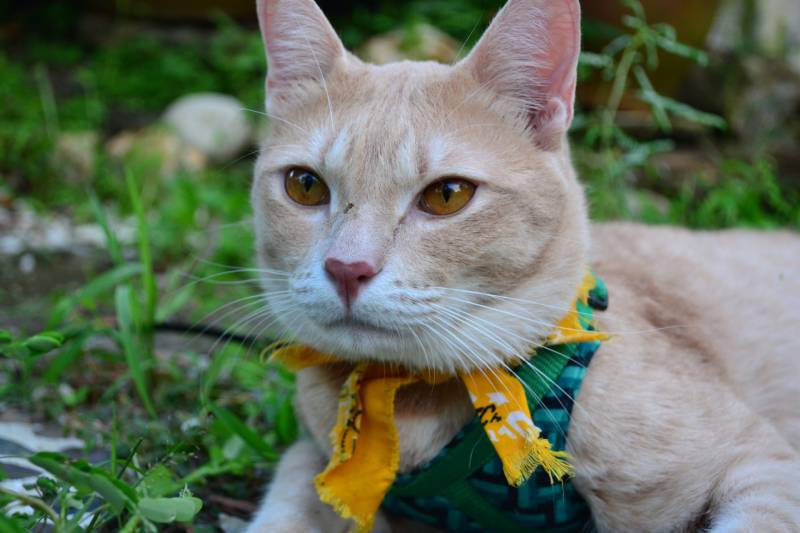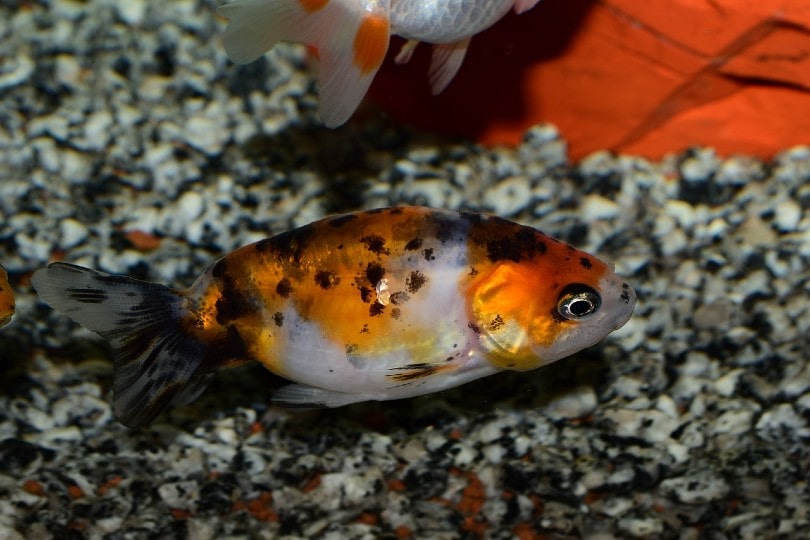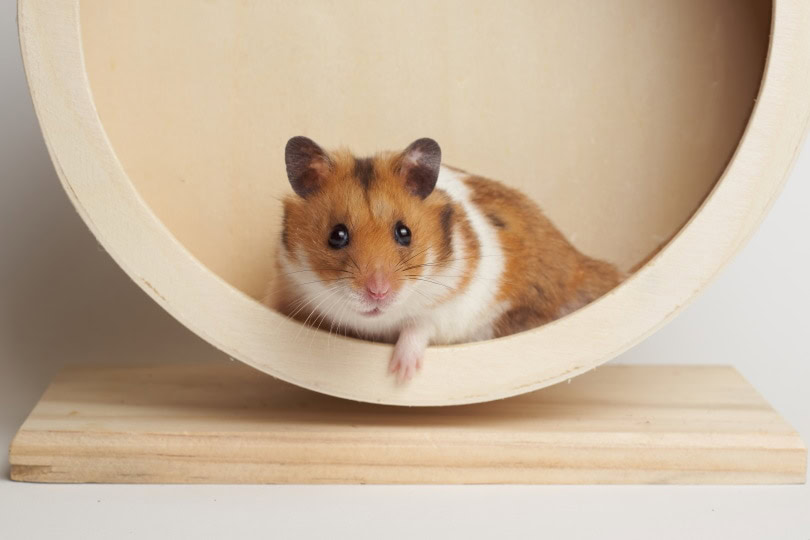VET APPROVED

The information is current and up-to-date in accordance with the latest veterinarian research.
Learn more »Keeping insects away from your cat prevents irritation, infections, and harmful conditions. Do you want to save money or avoid harsh chemicals by making your own DIY insect repellent for your cats? If so, you’ve come to the right place! In this article, we’ll show you how to make four insect repellents that are safe and effective for cats of all ages.

Before We Begin
Natural ingredients like herbs, plant extracts, and essential oils, are not regulated by the Environmental Protection Agency (EPA). As a result, there is no guarantee that these products will be effective against insects.
Citronella, peppermint, tea tree oil, and lavender are toxic to cats. Always consult your veterinarian before using any new product on your cat, and do a patch test on a small area of skin before applying a repellent to your cat’s entire body.

The 4 DIY Cat Insect Repellents
1. Catnip Cat Insect Repellent
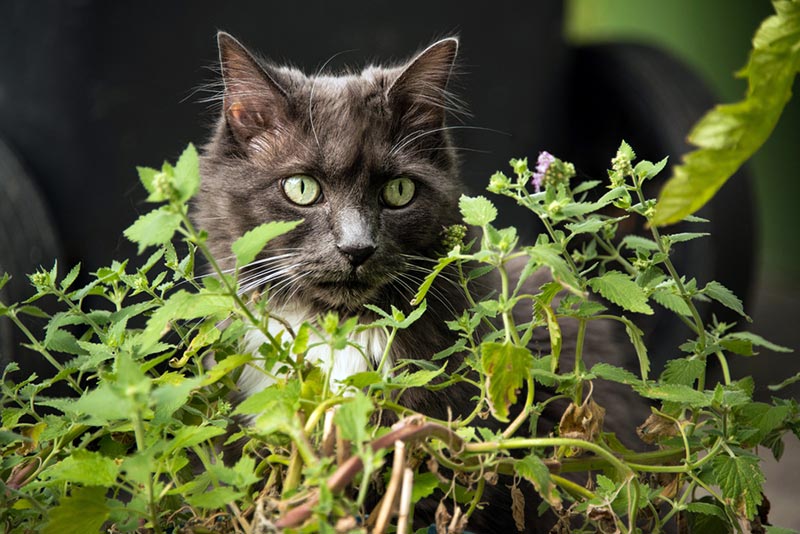
Catnip Cat Insect Repellent
Equipment
- Spray bottle
Materials
- 1 cup fresh catnip Nepeta cataria
- 1 quart water
Instructions
- Bring one quart of water to a boil.
- Add one cup of fresh catnip
- Mix together catnip and water.
- Steep for 5 minutes at a low boil
- Allow to cool down
- Pour mixture into a spray bottle and use as needed.
Notes
2. Rosemary Cat Insect Repellent
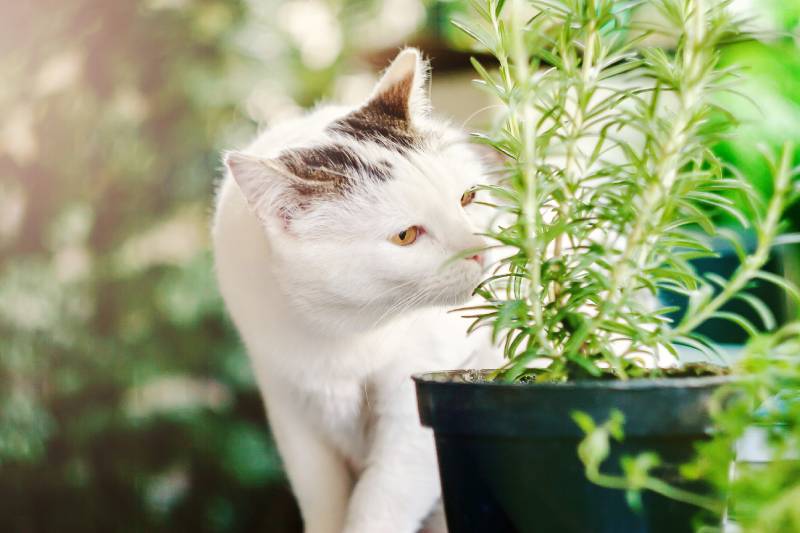
Rosemary smells amazing and is effective at repelling mosquitoes and some other bugs.
Ingredients
- ½ cup fresh rosemary (Rosmarinus officinalis)
- 1/4 cup mint oil
- 1 quart water
- Spray bottle
Instructions
1. Bring one quart of water to a boil.
2. Add half a cup of fresh rosemary
3. Mix rosemary and water.
4. Simmer for 5 minutes
5. Allow to cool down
6. Pour mixture into a spray bottle and use as needed.
Apply this repellent directly to your cat’s fur, avoiding their eyes and nose. Reapply every few hours, or as needed.
3. Basil Cat Insect Repellent
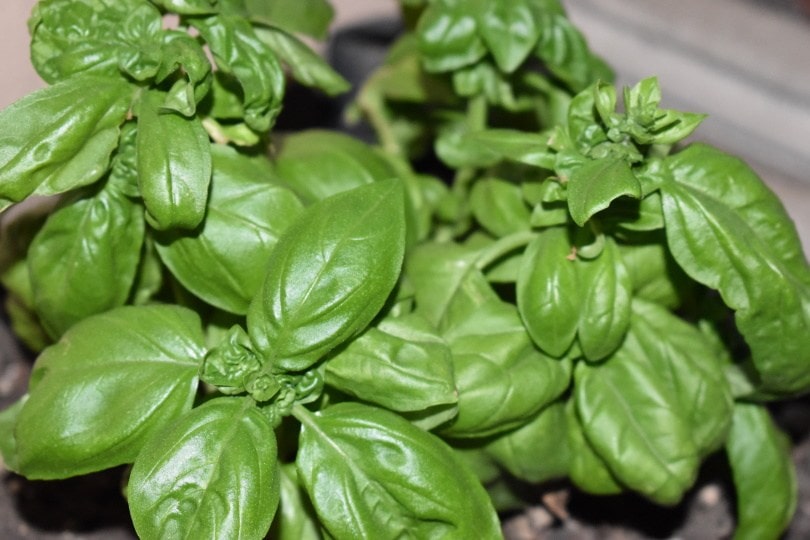
Ingredients
- 1/2 cup basil leaves (Ocimum basilicum)
- 1 quart water
- Spray bottle
Instructions
Bring one quart of water to a boil.
1. Chop the basil leaves
2. Add half a cup of basil leaves to the boiling water
3. Mix well
4. Simmer for 5 minutes at a low boil
5. Allow to cool down
6. Pour mixture into a spray bottle and use as needed.
Apply this repellent directly to your cat’s fur, avoiding their eyes and nose. Reapply every few hours, or as needed. Avoid using on open skin or wounds.
4. Lemon Balm Cat Insect Repellent
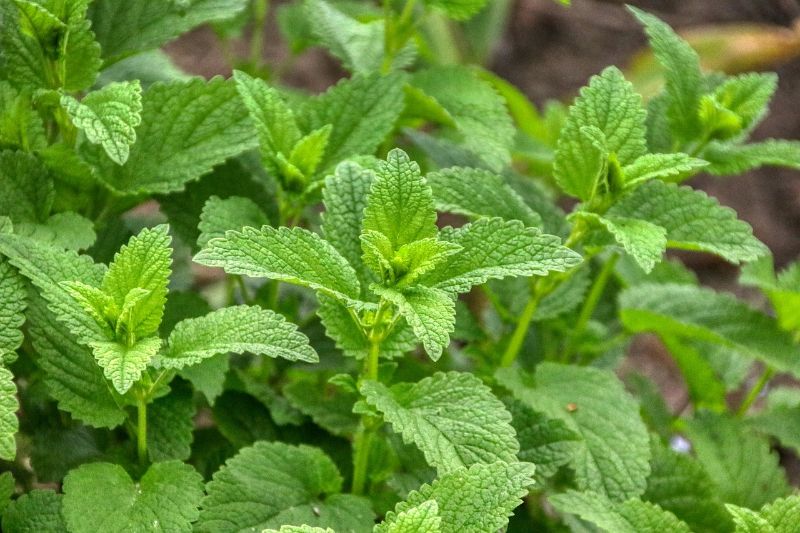
Lemon balm is another safe herb to use around cats. This citrus-smelling herb has insect-repelling properties. Although cats don’t generally like the smell of citrus fruits, lemon balm isn’t toxic to your cat.
Ingredients
- 1/2 cup fresh lemon balm leaves (Melissa officinalis)
- 1 quart water
- Spray bottle
Instructions
1. Bring one quart of water to a boil.
2. Add half a cup of fresh lemon balm leaves
3. Stir it up and allow to simmer for 5 minutes
4. Allow the mixture to cool down
5. Pour mixture into a spray bottle and use as needed.
Apply this repellent directly to your cat’s fur, avoiding their eyes and nose. Reapply every few hours, or as needed. Lemon balm is safe, but avoid using it on open skin or wounds. It can also sting your cat’s eyes.

Final Thoughts
There are several repellents that you can make at home to keep your cat safe from insects. The best repellent for your cat will depend on what type of fresh herb you have on hand and what scent your cat prefers. Whichever repellent you choose, be sure to apply it directly to your cat’s fur and avoid their eyes and nose. While the herbs have insect-repellent properties and are safe for cats, you might need to reapply them regularly. And remember, essential oils can be dangerous to your cat, even topically, as they will be absorbed, putting your pet’s life at risk. Therefore, we recommend that you stay clear of those products unless they are explicitly approved by a vet. Always check with a vet first to make sure your potion is safe for your cat!
Featured Image Credit: RJ22, Shutterstock
